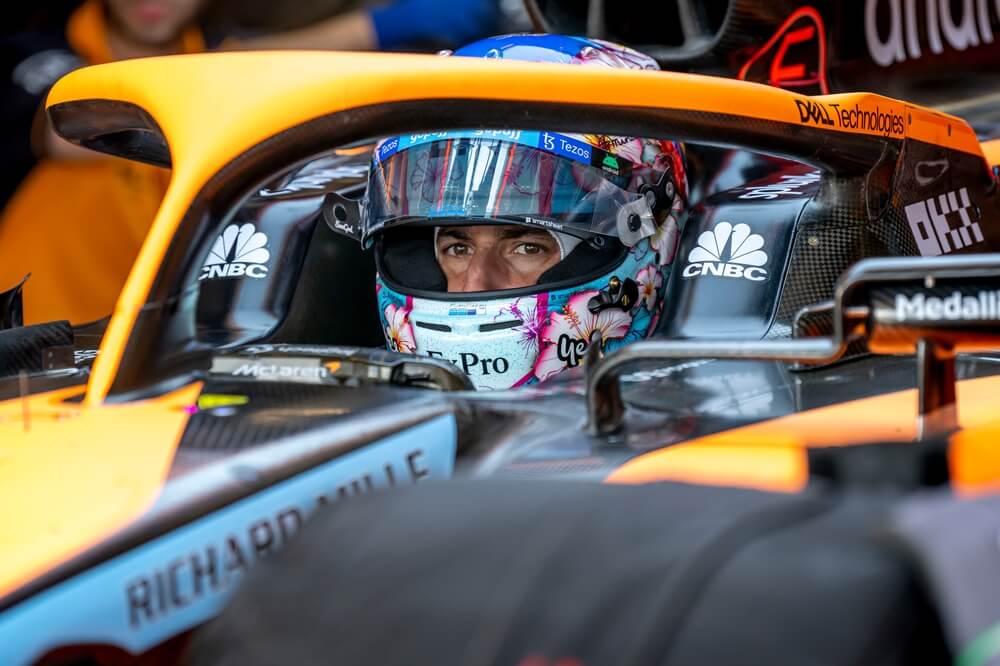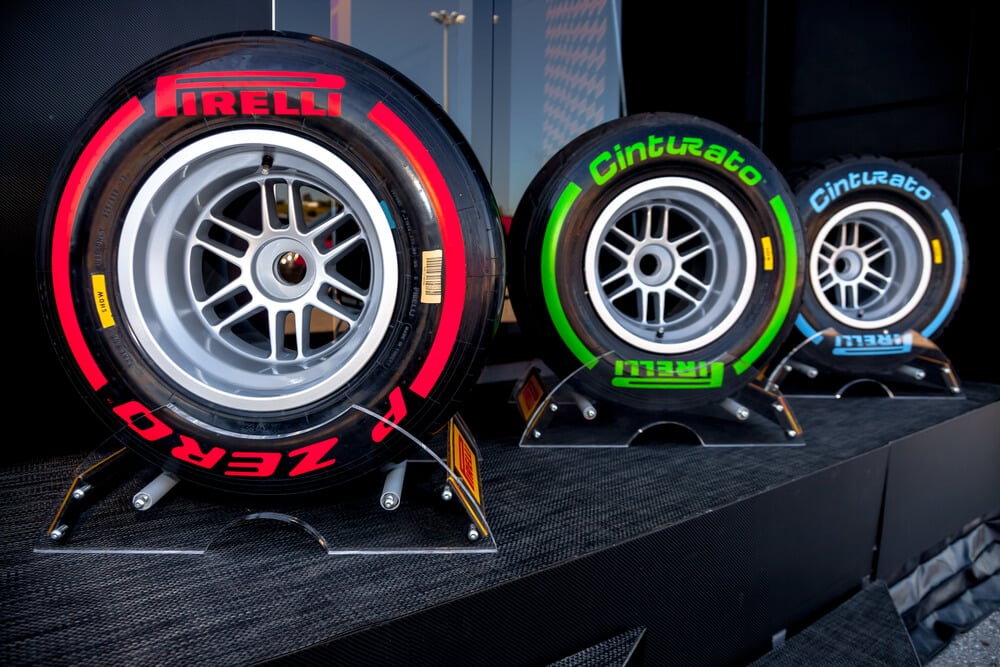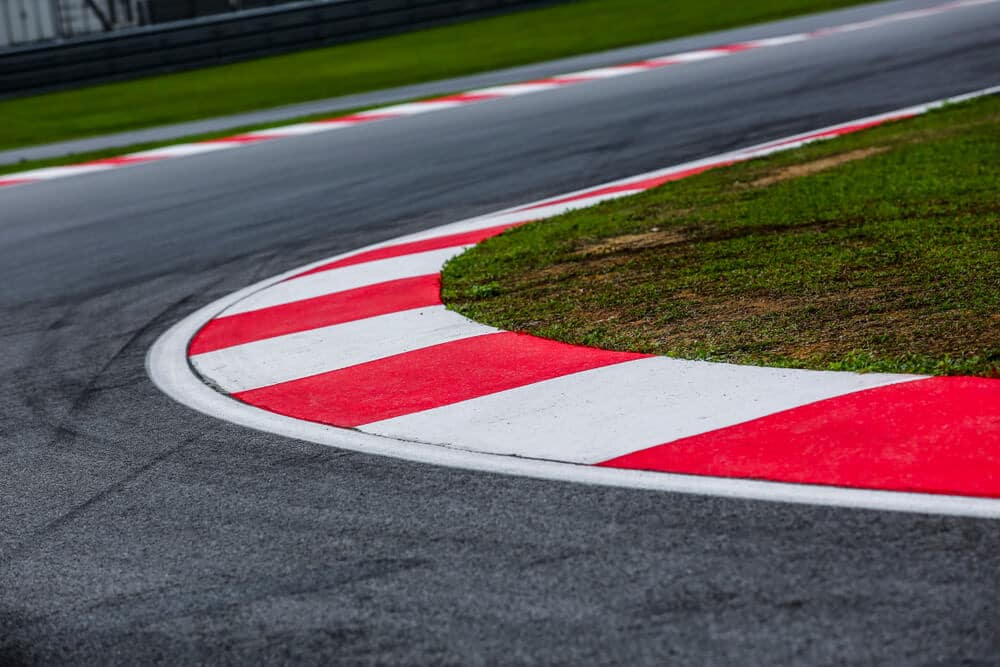Very little is known and explored about the role headrest plays in Formula One racing. It is an essential part of the driver’s cockpit, but its importance and functions have had little documentation and explanation. However, its importance and role in providing the driver with outstanding comfort on the track cannot be understated.
This article will take a closer look at the headrest in F1, how it was introduced, and its importance to the racing experience.
Table of Contents
Watch this video to learn more about how the headrest works.
What is a headrest?
A headrest in F1 is a padded device that is secured behind the driver’s head and neck. It provides impact absorption and protection from whiplash during crashes, as well as additional support during high g-force maneuvers.
It is an essential part of the driver’s cockpit and has been credited with potentially saving lives in some accidents.
The introduction of modern headrest padding in Formula One (F1) racing has had a major impact on driver safety. The device acts as a shock absorber during crashes, reducing the risk of whiplash and other neck injuries. It was introduced in 1996 and has been credited with potentially saving the life of Jos Verstappen during an accident that year.
F1 drivers can experience tremendous lateral g-force when cornering, up to 6G in some cases. Such powerful pressure strains the neck and head, making the headrest an essential part of their cockpit. The materials used are designed to help with impact absorption and to protect the driver from whiplash, making it an invaluable piece of technology for the race track.
Additionally, different types of headrest pads are available for the Formula One driver depending on the conditions of the track.
Key Takeaways
Here are some key aspects that you should know regarding headrests in formula one:
- Headrests are an essential part of the driver’s cockpit, designed to protect against whiplash and other neck injuries.
- The modern headrest was introduced in 1996 and has since been credited with potentially saving lives in some cases.
- Different types of headrests are available for the Formula One driver depending on the driving conditions.
- Headrests provide impact absorption and protection from whiplash during crashes, as well as additional support during high g-force maneuvers.
- The materials used in headrests are designed to minimize neck strain and improve safety on the track.
- Headrests have become an important part of Formula One, providing improved comfort and protection to drivers.
Importance of Headrests in Formula One
Now that you understand the basics of headrests in Formula One, we can look at why they are so important.
Safety reasons
Headrests in Formula 1 racing are essential to ensuring driver safety. The primary purpose of a headrest is to protect the head and neck from injuries sustained during a high-speed crash.
Positioned behind the driver’s head, the headrest is designed to absorb energy generated by an impact and act as a cushion to reduce the force transmitted to the head and neck. The special materials used are a combination of foam and other impact-resistant materials that work together to provide adequate protection from injury.
Headrests also serve to keep the head in a stable position during crashes, reducing the risk of further injuries. Additionally, they provide additional support for the neck and spine, which are particularly vulnerable during high-speed impacts. This helps to keep the head and neck in a neutral position, minimizing potential spinal damage.
Preventing injuries in case of an accident
Crashes are inevitable in formula 1 since cars are traveling at such high speeds. With this in mind, the importance of a headrest for driver safety cannot be overstated.
In the event of a crash, the head and neck can experience a whiplash effect due to the sudden deceleration of the body. This can lead to severe injuries such as spinal cord damage, concussion, or even death. The headrest is designed to absorb the energy generated by an impact and provide cushioning and support for the driver’s head and neck, thereby reducing the risk of injury.
This device keeps the driver’s head in place during an impact, preventing it from moving excessively, which can increase the chance of injury.
For example, during the 2016 Australia Grand Prix, Fernando Alonso had a terrifying crash of 305km/h. According to FIA data from the accident investigation, the peak impact force he faced was 46G. Fortunately, Alonso survived but with some cracked ribs. One of the crucial aspects that helped him make it out alive was the headrest he had in his car.
Compliance with regulations
Headrests are also required by Formula One regulation to be present in all cars. All F1 teams must adhere to the FIA’s strict guidelines when constructing their cars, which include having a minimum weight as well as an approved headrest.
These regulations help ensure that all F1 cars are safe and provide adequate protection for the driver in case of an accident. Therefore, it is important that teams follow these regulations and install a headrest in their cars.

Design of Headrest in Formula One
Headrests from the exterior are designed to blend seamlessly with the vehicle’s overall design. However, when viewed from the inside, it is clear that these devices are designed with driver safety in mind. Let’s take a closer look at the design of headrests in Formula One.
Watch this video from on FormelDirekt.se about how the headrest has changed over the years.
Materials used
The construction materials used in the headrests of Formula One car are tailored to meet the specific needs of each race. The exterior consists of a lightweight carbon-Kevlar structure, while the core is filled with temperature-specific memory foam known as Confor.
Depending on the ambient temperatures of the track, teams will receive instruction from the FIA to use a specific type of foam – CF45M (blue) for temperatures above 30°C, CF42M (pink) for temperatures below 30°C and Sunmate (white/light blue) for temperatures under 15°C. This is because the dynamic properties of each foam can change depending on the temperature, making it too firm for high-speed impacts if temperatures fall below 30°C.
Construction techniques
The construction techniques used to make Formula One headrest are tailored to provide optimal safety and protection for the driver. They must be lightweight yet strong enough to withstand high-speed impacts. The team must also consider the driver’s comfort and tailor the headrests accordingly.
To ensure that the headrests fit perfectly within the car, they are cut to a CAD profile according to the vehicle’s dimensions. The rear of the headrest is then fixed in place by two quick-release attachments at the front. Additionally, sculpted shapes are added to ensure the driver’s hands won’t bang into any part of the headrest during high-speed driving. All these features provide the driver with comfort in their seat during the race.
Impact resistance properties
Since the headrests must be able to withstand high-speed impacts, they are designed with specialized impact absorption materials. These layers of foam provide superior protection for the driver’s head and neck in case of a crash.
Additionally, these materials have excellent vibration-damping properties, which help reduce neck strain caused by long periods of driving.
Weight considerations
Headrests must also be designed with weight in mind to keep the car as light as possible. The materials used to construct them are carefully chosen to reduce their weight yet remain strong enough to withstand high-speed impacts.
Additionally, the headrests must be lightweight enough not to hinder the driver’s performance. All these features are essential for providing drivers with the best protection possible in case of an accident.
Evolution of Headrests in Formula One
Now that we have looked at the current design of headrests in Formula One let’s take a look at how they have evolved over time.
Changes in design over time
The design of the headrests in Formula One has seen significant changes over time. Initially, there was only a minimum thickness for the back and sides. However, in recent years the side thickness has been increased significantly to provide better protection for drivers during high-speed impacts.
Additionally, more attention is being paid to the weight of the headrests in order to make sure they don’t add extra drag to the car and hinder driver performance.
Improvements in safety standards
For the past few years, there has been a growing emphasis on safety in Formula One, and headrests have been at the forefront of this effort.
Teams typically aim for a headrest with the highest possible strength and impact absorption capabilities. This is done by using lightweight yet strong materials such as carbon fibre and aluminum. Additionally, more attention is also being paid to the driver’s comfort levels by using temperature-specific memory foam in the headrests.
These changes in the design and materials used for headrests have all been done with the intention of providing drivers with better protection and comfort during races.
Future of Headrests in Formula One
So, with ever-changing technical regulations in formula 1, what does the future of Formula One headrests look like? Let’s take a closer look.
Potential for new innovations
The future of headrests in Formula One looks to be an exciting one, with plenty of potential for new innovations. Here are some possibilities that can be explored.
Since drivers are often subjected to high temperatures during races, integrated cooling systems in headrests could help regulate their body temperature, keeping them comfortable and alert.
Additionally, more aerodynamic designs could reduce drag and improve airflow around the driver’s head – leading to faster lap times.
Furthermore, sensors and communication systems could be incorporated into headrests, providing real-time data to the pit crew and allowing them to make informed decisions during the race. With these potential innovations, Formula One drivers can be sure of increased safety and better performance.
Changes in regulations
Along with the potential for new innovations, changes in regulations can also affect the design of headrests. Currently, the FIA has a set of safety regulations that teams must adhere to when designing headrests. However, as the sport evolves and new technologies become available, these regulations will likely be revised to accommodate them.
During the 2017 Baku GP, Lewis Hamilton was in for a win until a loose headrest caused him to pit for a replacement. This mishap dropped him down the order, but eventually, he made a comeback to place fifth. Mercedes, in responding to this incident, looked into the issue and concluded that the length of locking pins at the back of the headrest could have been a major factor.
Although Mercedes took the blame, this event showed that there are still areas of improvement in Formula One headrest.
1. What is the purpose of the headrest in Formula One?
2. How are headrests tested and regulated in Formula One?
3. Can headrests be customized for individual drivers in Formula One?
Conclusion
So, as we have seen, headrests in Formula One are designed to provide drivers with optimal safety and support. They are constructed with lightweight yet strong materials, and the shape and size is tailored to fit within the car. Additionally, they use specialized impact absorption materials to provide protection in case of a crash.
These headrests have seen significant improvements over time as teams strive for greater safety standards. This has resulted in better protection for drivers during races and a more comfortable driving experience.
Article sources
Learn more about Formula One
Want to learn more about F1? Then visit our Formula 1 glossary and dictionary.



